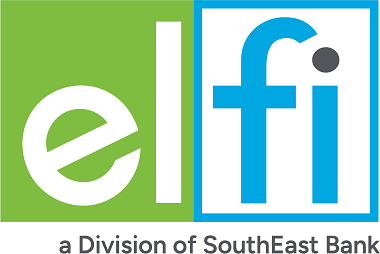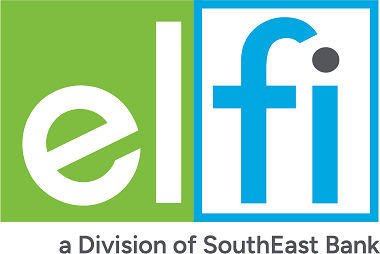Most graduate students will need to borrow money to manage the high cost of their education. These loans can be obtained from various sources, including the federal government, private lenders like banks, or other organizations. There are two primary types of loans for graduate students: federal loans and private loans.
Federal student loans for graduate students are generally part of the financial aid package. And these graduate student loans come in two types, Direct Unsubsidized Stafford Loans and Direct PLUS Loans. Both types of federal student loans will require you to complete the Free Application for Federal Student Aid (FAFSA®) which will help determine how much you can borrow. While Direct Unsubsidized Stafford Loans tend to have lower fixed interest rates, you may be limited in the amount you can borrow each year and in total. The Direct PLUS Loan is known to have the highest interest rate and origination fee in the federal student loan program; and your only annual limit will be your cost of attendance minus other financial aid received. Because of the high interest rate and fees found with Direct PLUS Loans, many students who need additional financial aid such as student loan funds look at private student loans to see what types of loans and rates are available.
Private Student Loans for Graduate Students
Private student loans are another financial aid option for students to pay graduate school. These graduate student loans offer competitive fixed and variable interest rates based on current market trends, with flexible repayment terms, and a variety of benefits unique to each lender such as an interest rate reduction for enrolling in automatic payments. It is important to note that variable rates may increase over the life the the loan, while fixed interest rates will stay the same.
Private Student Loan Rates
Variable rates starting at:
4.36% APR
Fixed rates starting at:
2.71% APR
Lowest APRs shown for Private Student Loans are available for the most creditworthy applicants for undergraduate loans, and include a 0.25% interest rate reduction while enrolled in automatic payments. Interest rates as of March 4, 2024.
Federal Student Loan Rates
For loans first disbursed July 1, 2024 through June 30, 2025
6.53%
Undergraduate
8.08%
Graduate
9.08%
PLUS Loans
Since private student loans are offered by banks or credit unions, rather than the federal government, they will do a credit check. If you have an adverse credit history, low credit score and little to no employment history, you may require a creditworthy cosigner in order to get approved and qualify for a private student loan. We recommend looking for a lender that offers cosigner release. This allows you to release the cosigner from your loan after making a series of on-time payments (typically 24 to 48 payments).
Current private graduate student loan interest rates start at 5.09% .
Easily compare private graduate student loan lenders or enter your school below to find a lender that works with your university.
Private Student Loans for Graduate or Professional School
Some private graduate student loan lenders will offer loan options specifically designed for your field of study. To learn about options based on your field, check out these articles:
- How to Pay for Medical School
- How to Pay for Nursing School
- How to Pay for Pharmacy School
- Medical Residency and Relocation Loans
- Dental Residency Relocation Loans
- Health Professions Loans
- How to Pay for Law School
- Bar Study Loans
Federal Student Loans for Graduate School
It’s always wise to consider Direct Unsubsidized Stafford Loans first as these graduate student loans come with a low, fixed rate, generous deferment and forbearance terms, and may qualify for federal loan forgiveness or repayment programs Unsubsidized loans are not credit based and will not require a credit check or endorser. To qualify for unsubsidized loans, you must be enrolled at least half-time at an eligible school.
Direct PLUS Loans or private graduate student loans can be considered if you need to fill in the funding gaps because your annual limit will only be affected by the cost of attendance minus other financial aid received. Graduate students with excellent credit scores, however, or those with a creditworthy cosigner, should explore private graduate student loan options and compare terms against the Direct PLUS loan. This is because there are origination fees and interest rates on federal student loans for graduate school that may be more expensive than the current rates you will find on private graduate student loans. To qualify for PLUS loans, you must be enrolled at least half-time at an eligible school in a graduate program or program that will lead to a professional degree or certificate.
Federal loans are required by law to provide a variety of flexible loan repayment options such as income based repayment, income contingent repayment plans, and loan forgiveness and deferred repayment options for those who qualify.
| Current Private Student Loan Interest Rates | Current Grad PLUS Loan Interest Rate |
|---|---|
| 5.09% to 14.50% | 8.08% |
Are There Subsidized Loans for Graduate School?
No, there are no subsidized loans offered in the federal student loan program for graduate students. As of July 1, 2012, graduate students are only eligible for Direct Unsubsidized Loans.
Loan Fees on Graduate Student Loans
Some graduate school loans come with fees such as application and origination fees. Graduate student loan fees can impact how much money you actually receive. It’s important to understand and factor in fees when deciding which graduate student loan is right for you.
Federal Student Loan Fees
Direct Unsubsidized Loans and Grad PLUS Loans both have origination fees. This fee is a percentage of the total amount of the loan. You, as the borrower, are responsible for this fee.
The origination fee for a federal student loan is deducted from the total amount of your graduate student loan, meaning you will not receive the total amount borrowed. However, you will be responsible for repaying the entire amount borrowed (including the origination fee). The table below highlights the current graduate student loan fees for federal student loans.
| Direct Unsubsidized Loan | Grad PLUS Loan | |
|---|---|---|
| Origination Fee* | 1.057% | 4.228% |
*Origination fees are updated yearly by the federal government on October 1.
Private Student Loan Fees
Most private student loan lenders do not charge application or origination fees. That means the amount you borrow will be the amount disbursed to your school. When comparing private student loan lenders, you should look for other fees that may surface, such as late fees.
How Loan Fees Affect the Total Loan Cost
Loan fees, such as origination fees, are typically a percentage of the total loan amount, and can affect how much money you actually receive to pay for school. An origination fee is deducted from the amount you’re borrowing before your loan is disbursed, meaning the amount of money you ultimately receive will be the total amount you borrowed minus the origination fee.
Example:
| Amount Borrowed | Origination Fee | Amount Received |
|---|---|---|
| $10,000 | 4% | $9,600 |
| $20,000 | 4% | $19,200 |
Be sure to factor in loan fees when figuring out how much you need to borrow to cover the cost of attendance.
Alternatives to Student Loans for Graduate School
Graduate student loans are not the only financial aid option when it comes to paying for graduate school. Aside from grants and scholarships, and other forms of gift aid, you can explore financing your education through an income share agreement, or working for the college as a research or teaching assistant.
Income Share Agreements
An income share agreement is essentially a contract that allows you to borrow money to pay for school in exchange for a percentage of your future salary. When you borrow money via an income share agreement, you will not be charged interest. Instead, you commit to paying a percentage of your future salary for a set period of time, typically no more than ten years.
Peer-to-Peer Lending
Peer-to-Peer loans are an option for graduate students struggling to find a creditworthy cosigner. There are two types of peer-to-peer loans: friends and family loans, and stranger-to-stranger loans. Sites that support peer-to-peer lending provide formal documentation for these loans. Your adverse credit history and credit score may play a factor in your ability to get a peer-to-peer loan. Another thing to consider with a peer-to-peer loan is the lack of benefits. The interest rate on a peer-to-peer loan can be quite high, and family and friend peer-to-peer loans are unlikely to qualify for the student loan interest deduction. Learn more about peer-to-peer loans.
Tuition Payment Plans
Ask your university if they offer a tuition payment plan. This allows you to make a series of payments toward your tuition, rather than one lump sum all at once. If you are working while in school, this alternative may allow you to avoid graduate student loans altogether. Contact your graduate school’s financial aid office for more information.
Research and Teaching Assistantships
Many colleges offer graduate level research or teaching assistantships. These opportunities may come with a stipend or tuition discount. Not only can a graduate assistantship offset the cost of your education, but it can be a great resume builder for future employment after graduation.
Repayment Options for Private Graduate School Loans
Private graduate student loan lenders provide loan repayment options which allow you to begin making payments immediately, or to make interest-only payments while you’re in-school, or to defer repayment until six months after you graduate. The grace period to begin making payments on your federal student loans is generally six months or more after leaving graduate school.
The grace period and loan repayment plans for a private graduate student loan will vary by lender and the repayment option you choose. Typically, you can choose loan repayment plans ranging from a 5, 10, or 15-year repayment term, with no penalties for paying your loan off early. Most lenders do not offer an income-driven repayment option (like the federal loan program). And graduate student loan forgiveness programs are not offered for private student loans.
Refinance Undergraduate Student Loans
Something to consider when exploring student loans for graduate school is refinancing your undergraduate student loans in order to lower your monthly payments. If you are someone who is working while going to grad school, and you were planning to make monthly payments on your undergraduate loans anyway, this could help simplify your life. It would allow you to take advantage of today’s lower rates, while reducing your monthly payments. Current private student loan refinancing rates are as low as [INSERT SHARED VARIABLE]. Plus, you can always refinance any new student loans you obtain in grad school with a previously refinanced loan, if that is an option you want to explore.
You also have the option of combining private student loans and federal student loans together. However, it’s worth noting that when refinancing federal student loans with a private student loan lender you will lose federal loan benefits, including access to income-based repayment, public service loan forgiveness, and generous deferment and forbearance periods offered by the Direct Loans program.
What to Read Next
Best Private Student Loans for April 2025
Financial Aid for Graduate School
Private Student Loans vs PLUS Loans


















